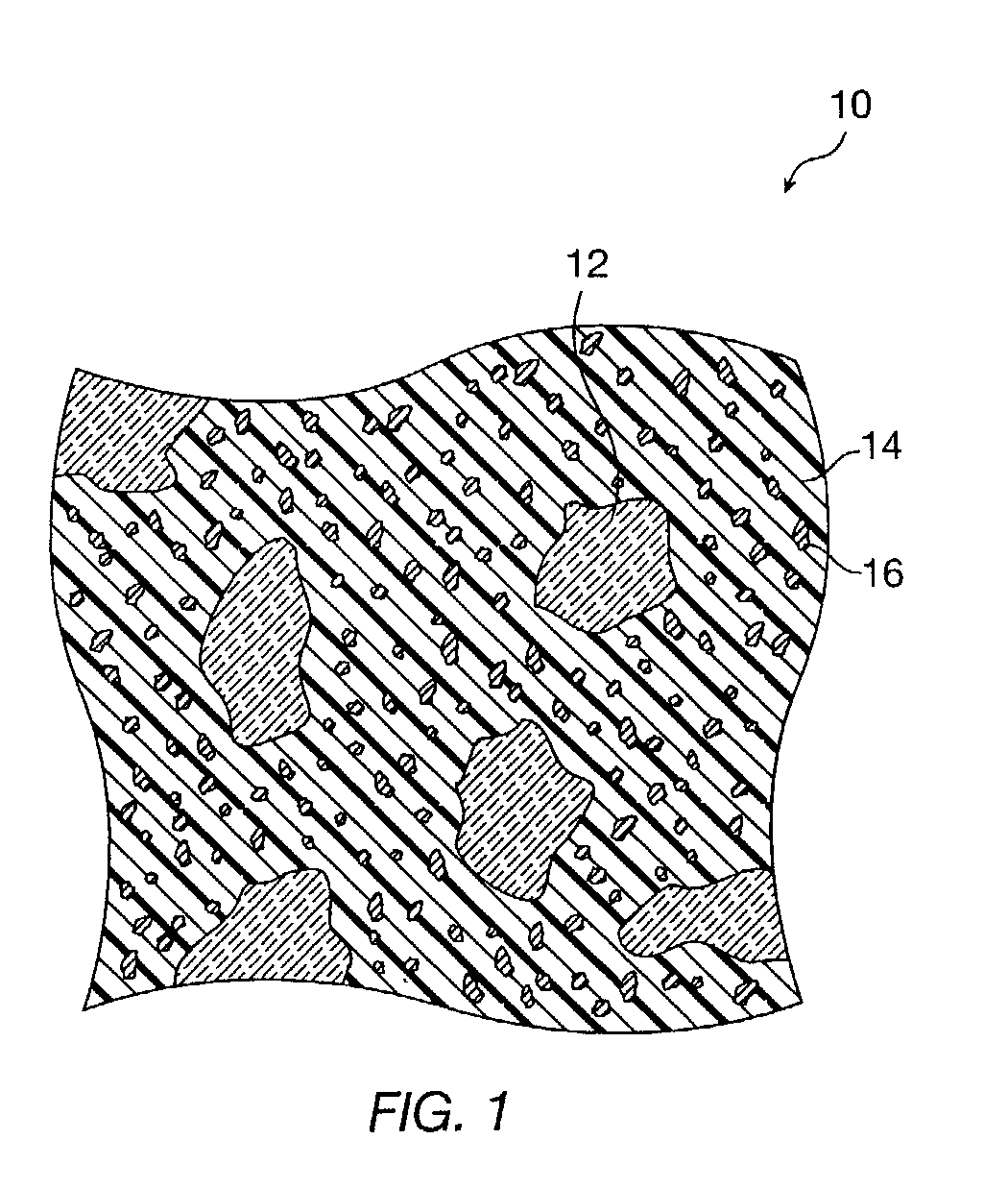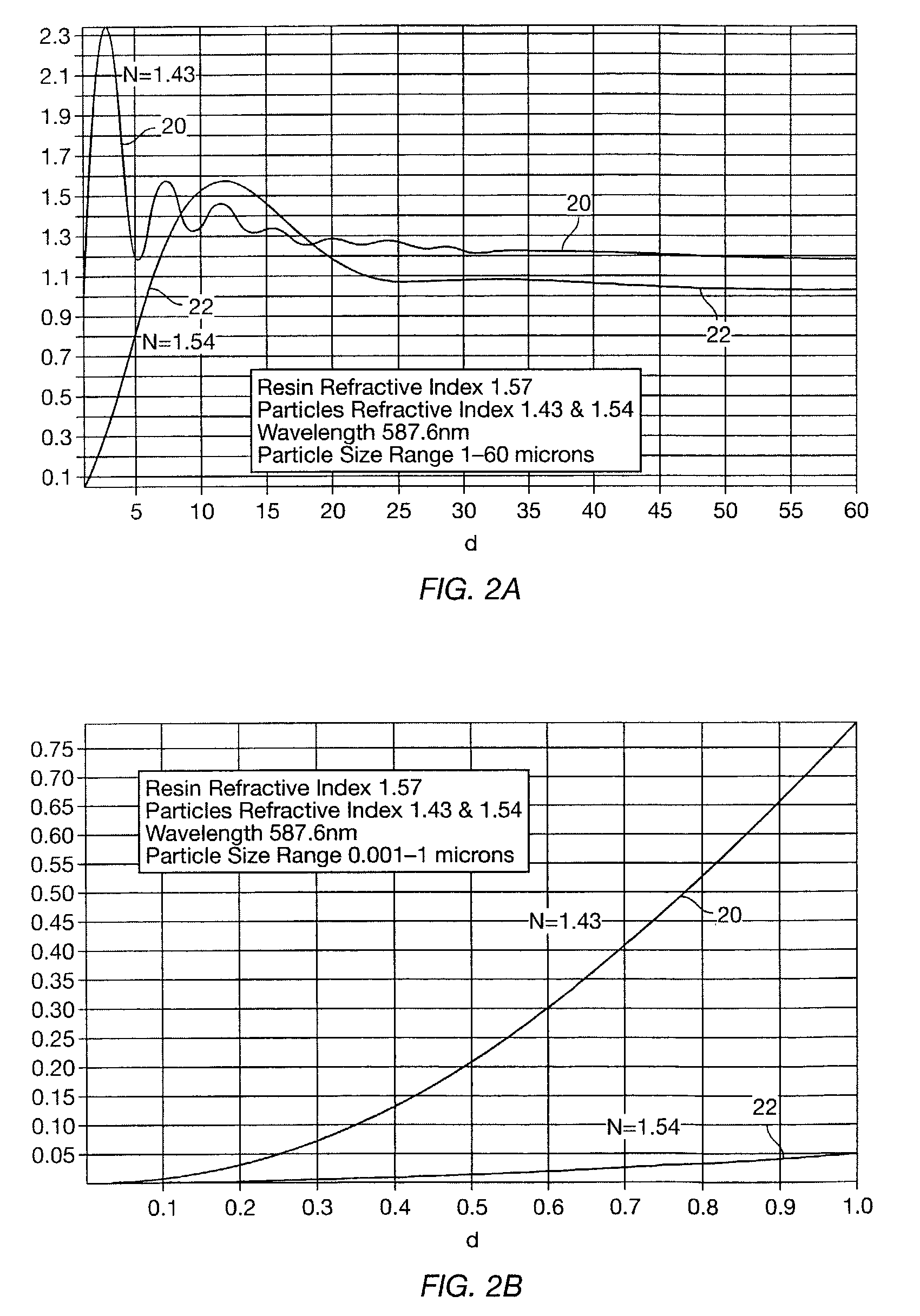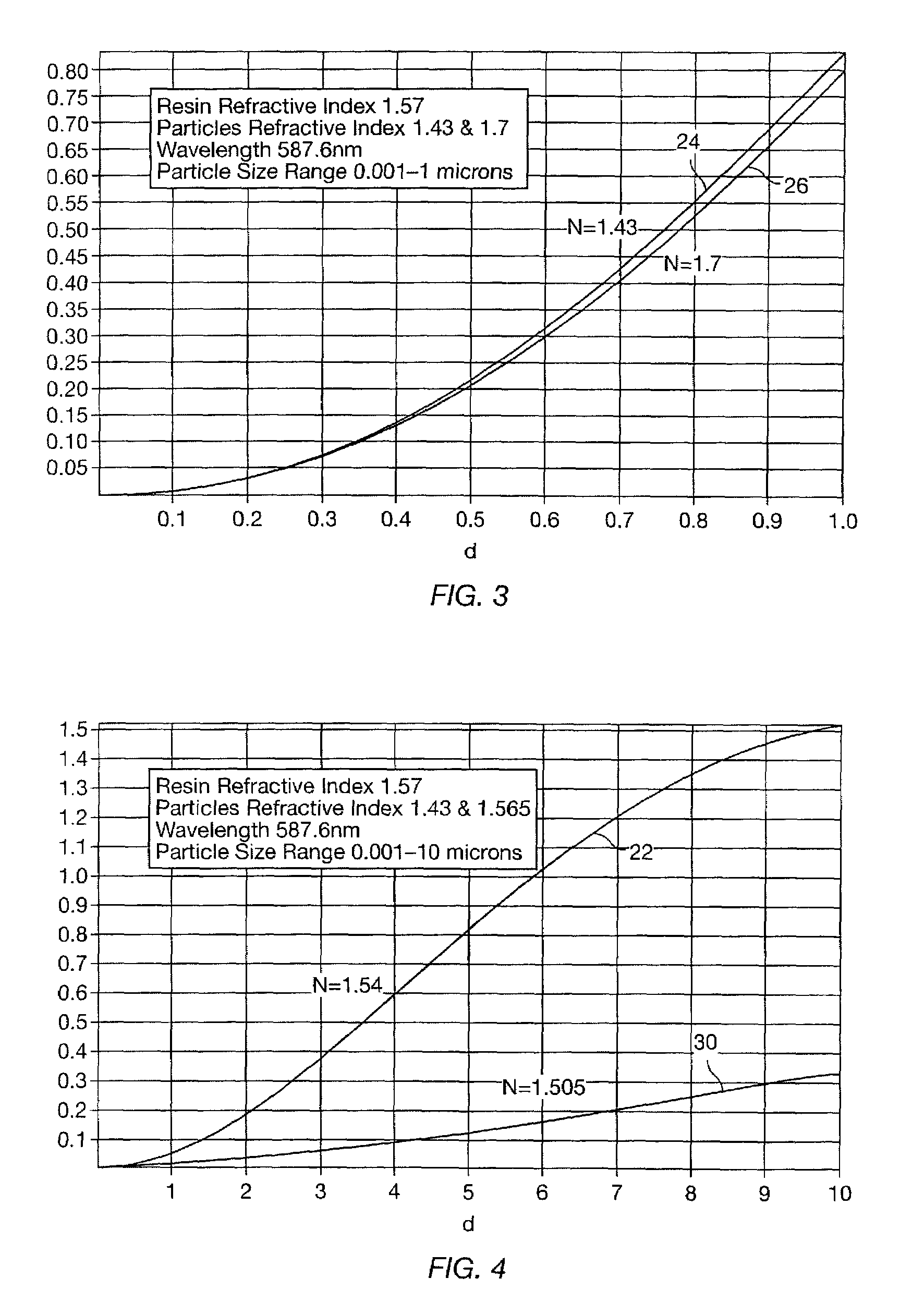Optical polymer blend with bimodal particle sizes
a technology of optical polymer and blend, applied in the direction of special tyres, transportation and packaging, tyre parts, etc., can solve the problems of diffusing materials with light scattering properties, their use as optical components, etc., to reduce the cte of the blend, reduce scattering, and reduce light scattering
- Summary
- Abstract
- Description
- Claims
- Application Information
AI Technical Summary
Benefits of technology
Problems solved by technology
Method used
Image
Examples
Embodiment Construction
[0017]Resin blends suitable for a range of applications, including optical adhesives and optical polymers for molding or machining, include large and small particles to achieve a low CTE and low scattering while maintaining low viscosity of the resin blend in the fluid state. Relatively large particles are embedded in a matrix of resin and relatively small particles. The smaller particles are sub-wavelength particles added to the resin to adjust the refractive index of the matrix to more closely match the refractive index of the largee particles. This allows a greater selection of materials for the larger particles to obtain a low CTE for the resin blend, including materials with a low or negative CTE. The larger particles do not increase the viscosity of the resin blend in the fluid state as much as a similar volume of smaller particles would.
I. An Exemplary Resin Blend with Bimodal Particle Sizes
[0018]FIG. 1A is a simplified cross section of a resin blend 10 according to an embodi...
PUM
| Property | Measurement | Unit |
|---|---|---|
| refractive index | aaaaa | aaaaa |
| vol. % | aaaaa | aaaaa |
| vol. % | aaaaa | aaaaa |
Abstract
Description
Claims
Application Information
 Login to View More
Login to View More - R&D
- Intellectual Property
- Life Sciences
- Materials
- Tech Scout
- Unparalleled Data Quality
- Higher Quality Content
- 60% Fewer Hallucinations
Browse by: Latest US Patents, China's latest patents, Technical Efficacy Thesaurus, Application Domain, Technology Topic, Popular Technical Reports.
© 2025 PatSnap. All rights reserved.Legal|Privacy policy|Modern Slavery Act Transparency Statement|Sitemap|About US| Contact US: help@patsnap.com



